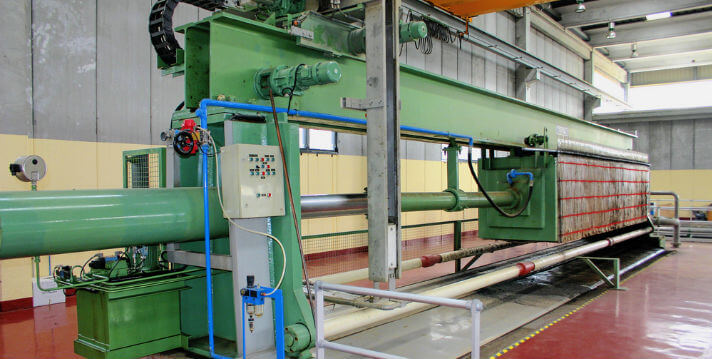What Is a Sludge Dewatering Screw Press?
Written by AOS Treatment Solutions on March 13, 2018

Water and wastewater treatment have many components. One of these is the sludge dewatering screw process. Here’s how it works and why it is a useful solution to minimizing waste.
What Is a Screw Press for Sludge Dewatering?
In simple terms, a dewatering screw press separates liquids from solids. It is a device that moves slowly, dewatering sludge through a gravitational process. A screw press is used for material that is hard to dewater, including materials that pack together. The screw press uses a filter system to separate the liquid from the solid material. Liquid collects as it flows through a screen or filter and can then be reused.
What Is the Purpose of Screw Press Sludge Dewatering in Water Treatment?
The Dewatering Screw Press has a role in several industry sectors and is not just concerned with processing sewage. The sludge dryer system of separating liquid from solids is used in the paper industry where water is removed from cellulose fiber. In the chemical industry, screw presses are used in a variety of processes, including those used for synthetic rubber, hydrated polymer and sodium alginate. The food industry uses screw presses to extract alcohol from foods. It is also used to separate water from waste food to convert to animal feed.
With a focus on the environment and the use of natural resources, maximizing the use of wastewater is crucial, especially in regions where there is low rainfall. A dewatering screw press minimizes the amount of solid volume that requires disposal too, which ensures landfill and other waste systems are optimized. If a dewatering screw press has been installed, it eliminates the need for the cost of sedimentation tanks, as the secondary sludge is thickened by the equipment after the process.
The Dewatering Screw Press Design
A feed pump transfers sludge to the dewatering screw press. Sludge water is pumped to the first inlet chamber. It is here that the flow to the other section of the screw press is optimized using an overflow.
As the sludge water enters the mixing chamber from the inlet chamber, a flocculant is added, which helps solid particles aggregate into a product known as flocks. The sludge water is mixed with the flocculant by a slow-moving blade in the mixing chamber. The flocks, together with the treated sludge water, flows towards the screw press.
The helix of the screw has plates that are a self-cleaning filter. The moving plates ensure that continuous self-cleaning of the filter takes place while the fixed plates act as a filter. Four guiding rods hold two fixed plates and one moving one. When the screw is in motion, the loose plates rotate. There is a gap between the fixed and loose plates of around 0.5mm, and water from the dewatering process flows through this space. There is a pressure piece at the end of the screw that makes the wastewater dewatering process more efficient.
By having a dewatering screw process system in place, an industrial or municipal wastewater treatment plant can maximize the amount of water recycled for use, and minimize the volume of sludge waste. Storage space is also reduced by doing away with storage containers. This efficient wastewater treatment solution is one worth considering for an area that needs to conserve water efficiently.
Contact us today for more information from our municipal water treatment experts.

